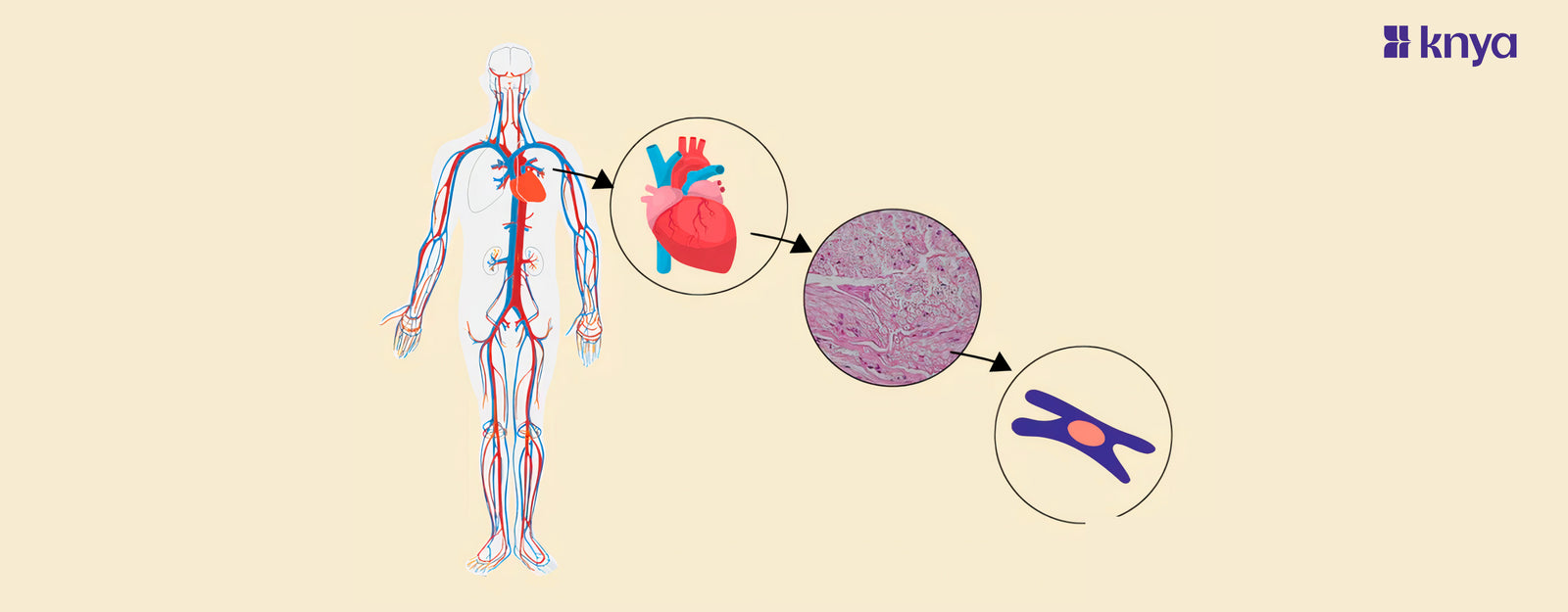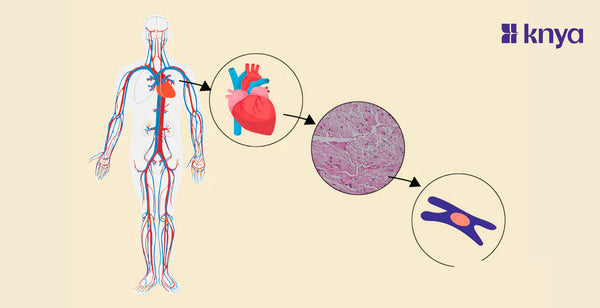Difference Between Morphology and Anatomy: The terms morphology and anatomy often intertwine, yet they have difference aspects of organismal structure and form. Morphology and anatomy are the pillars of the living organisms, shedding light on their diverse features and functions. While both through into the examination of biological structures, they diverge in their scopes and emphases. Let's check out the Difference between morphology and anatomy.
- Morphology:
- Focuses on the study of the form and structure of organisms.
- Encompasses both external and internal features.
- Examines the variations in size, shape, color, and other external characteristics.
- Crucial in taxonomy and classification.
- Anatomy:
- Concentrates on the internal structures of organisms.
- Involves the dissection and detailed examination of organs, tissues, and cells.
- Provides insights into the functions of different structures.
- Applied in medical sciences, veterinary studies, and paleontology.
Difference Between Morphology and Anatomy
This detailed table provides a comprehensive comparison between Morphology and Anatomy, highlighting their respective focuses, applications, and methodologies.
|
Aspect |
Morphology |
Anatomy |
|
Focus |
Examines the form and external features. |
Concentrates on internal structures and components. |
|
Components Studied |
Involves both external and internal characteristics. |
Primarily involves internal structures of organisms. |
|
Scope |
Covers size, shape, color, and external variations. |
Encompasses detailed examination of organs, tissues, and cells. |
|
Applications |
Essential in taxonomy, classification, and evolution. |
Applied in medical sciences, veterinary studies, and paleontology. |
|
Tools Used |
Relies on observation, measurement, and comparison. |
Involves dissection, imaging techniques, and microscopic analysis. |
|
Adaptations and Evolution |
Studies external features and their adaptive functions. |
Explores internal adaptations and evolutionary changes. |
|
Taxonomic Significance |
Crucial for species classification based on morphology. |
Less relevant for taxonomy but contributes to understanding relationships. |
|
Functional Insights |
Limited insights into functions, more about appearance. |
Provides detailed insights into the functions of organs and structures. |
|
Level of Examination |
Primarily at the macroscopic level. |
Involves both macroscopic and microscopic examinations. |
|
Research Fields |
Important in botany, zoology, and ecology. |
Widely used in medicine, veterinary science, and biological research. |
|
Example Applications |
Studying plant leaf shapes, animal body structures. |
Investigating organ functions, cellular interactions. |
Check out Best Scrubs for Doctors here!
What is Morphology?
Morphology is a branch of biology that focuses on the study of the form, structure, and outward appearance of living organisms. It plays a crucial role in the classification, identification, and understanding of the diverse range of species populating the natural world. Morphologists examine the external characteristics of organisms, delving into their shapes, sizes, colors, and the arrangement of body parts. By scrutinizing these visible attributes, morphologists gain insights into the evolutionary relationships between different species and contribute to our broader comprehension of biodiversity.
- External Structures: Morphology primarily deals with the external features of organisms, including their overall shapes, sizes, and visible structures.
- Classification and Identification: It aids in the classification and identification of species based on their morphological characteristics, contributing to the development of taxonomies.
- Adaptations and Evolution: Morphologists study how the external morphology of organisms reflects adaptations to their environments and provides clues about their evolutionary history.
- Systematic Observation: Detailed and systematic observation is a fundamental aspect of morphology, involving the examination of various body parts, such as limbs, leaves, flowers, and other external structures.
- Comparative Analysis: Comparative morphology involves comparing the morphological features of different species to discern similarities and differences, contributing to our understanding of evolutionary relationships.
- Functional Significance: Morphological traits often have functional significance, as the form of an organism is closely related to its function and ecological niche.
- Macroscopic Perspective: While morphology predominantly deals with the macroscopic aspects of organisms, it may also encompass the study of larger structures visible to the naked eye.
- Interdisciplinary Nature: Morphology intersects with various other disciplines, including anatomy, physiology, ecology, and paleontology, providing a holistic approach to understanding the complexities of life forms.
What is Anatomy?
Anatomy is the branch of biology that involves the study of the internal structure and organization of living organisms. It delves into the detailed examination of the body's components, including organs, tissues, cells, and the relationships between them. Unlike morphology, which focuses on the external form, anatomy seeks to uncover the intricacies of internal structures, providing a deeper understanding of how organisms function. This discipline plays a fundamental role in various fields, such as medicine, veterinary science, and paleontology, contributing to advancements in healthcare, biology, and our knowledge of evolutionary history.
- Internal Structures: Anatomy explores the internal structures of organisms, encompassing organs, tissues, cells, and their spatial relationships.
- Microscopic and Macroscopic Levels: Anatomy operates on multiple scales, ranging from macroscopic observations of organs and body systems to microscopic examinations of cells and subcellular structures.
- Functional Relationships: It focuses on uncovering the functional relationships between different parts of an organism, providing insights into how these structures work together to maintain life processes.
- Specializations: Anatomy is often specialized based on the organism being studied. For example, human anatomy focuses on the structure of the human body, while comparative anatomy compares the anatomical features of different species.
- Medical and Scientific Applications: The knowledge gained from anatomical studies is applied in medical fields for understanding diseases, surgeries, and treatments. It also contributes to scientific research in areas such as evolutionary biology.
- Dissection and Observation: Traditional anatomical studies involve the dissection of organisms to observe and analyze internal structures. Modern techniques, including imaging technologies, have expanded the ways in which anatomy is studied.
- Histology: Histology, a sub-discipline of anatomy, focuses specifically on the microscopic study of tissues, exploring their composition, structure, and functions.
- Developmental Anatomy: This branch of anatomy examines how organisms develop and grow, exploring the changes that occur from conception to maturity.
- Applied Anatomy: Applied anatomy is concerned with the practical application of anatomical knowledge, especially in fields like surgery, sports science, and rehabilitation.
Similarity Between Morphology and Anatomy
While morphology and anatomy are distinct branches of biology, they share some similarities in their focus and objectives. Here are a few points highlighting the common ground between morphology and anatomy:
- Study of Structure: Both morphology and anatomy involve the study of the structure of living organisms. While morphology emphasizes external features, anatomy delves into both external and internal structures.
- Organismal Understanding: Both disciplines contribute to a comprehensive understanding of organisms. Morphology helps in the identification and classification of species based on external characteristics, while anatomy provides insights into internal structures and their functions.
- Interdisciplinary Nature: Both morphology and anatomy intersect with various other biological disciplines. They are not isolated studies but rather integral components of broader biological research, contributing to fields such as ecology, evolution, and physiology.
- Contribution to Taxonomy: Morphology and anatomy play essential roles in taxonomy by providing characteristics used for classifying and categorizing organisms. Morphological features aid in species identification, while anatomical structures contribute to the hierarchical classification of organisms.
- Comparative Analysis: Comparative analysis is a common approach in both morphology and anatomy. Researchers compare the features of different organisms to identify similarities and differences, which can provide insights into evolutionary relationships.
While morphology and anatomy diverge in their specific focuses, their shared emphasis on understanding the structure of living organisms makes them complementary fields that collectively contribute to a comprehensive view of life sciences.
|
Check out More Articles |
|















